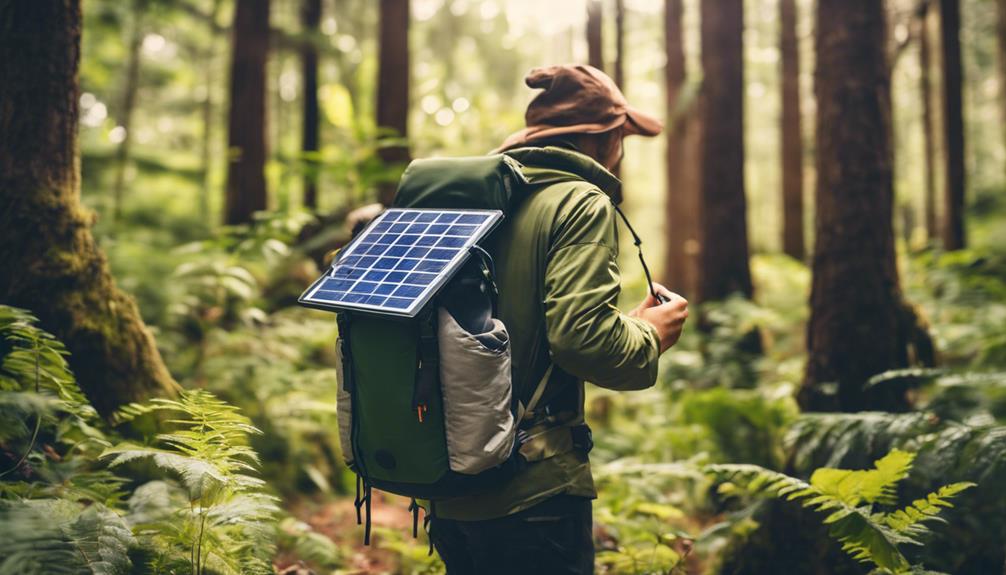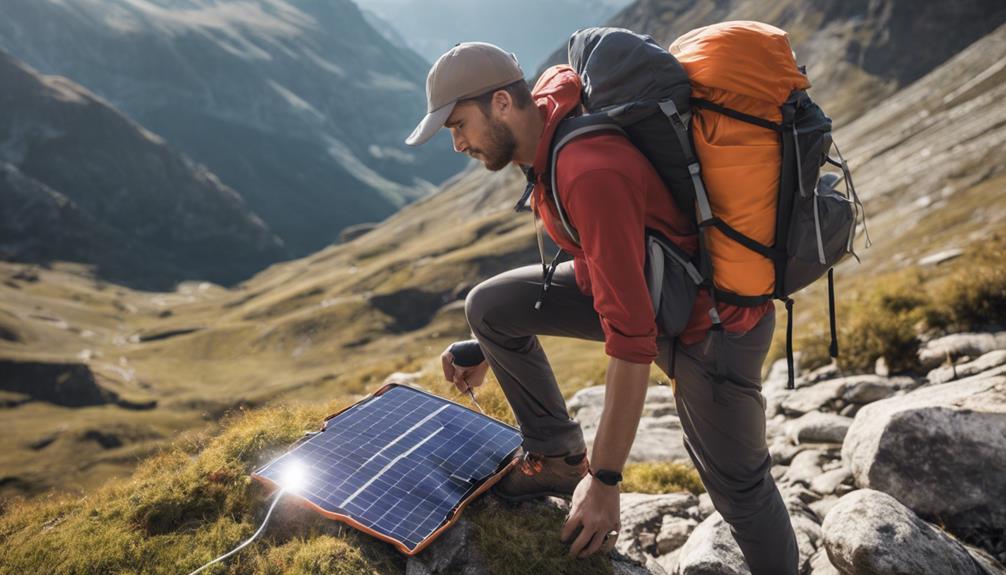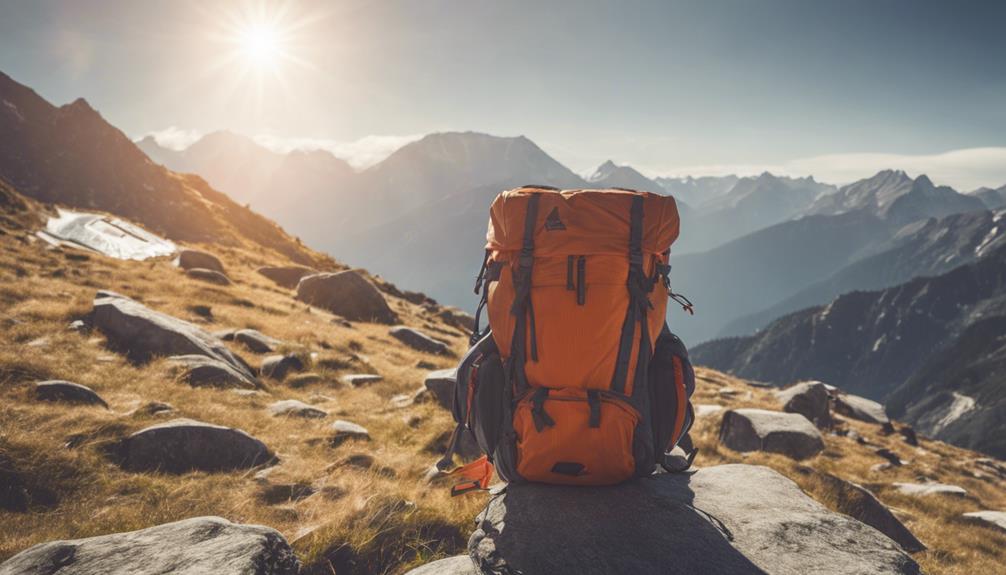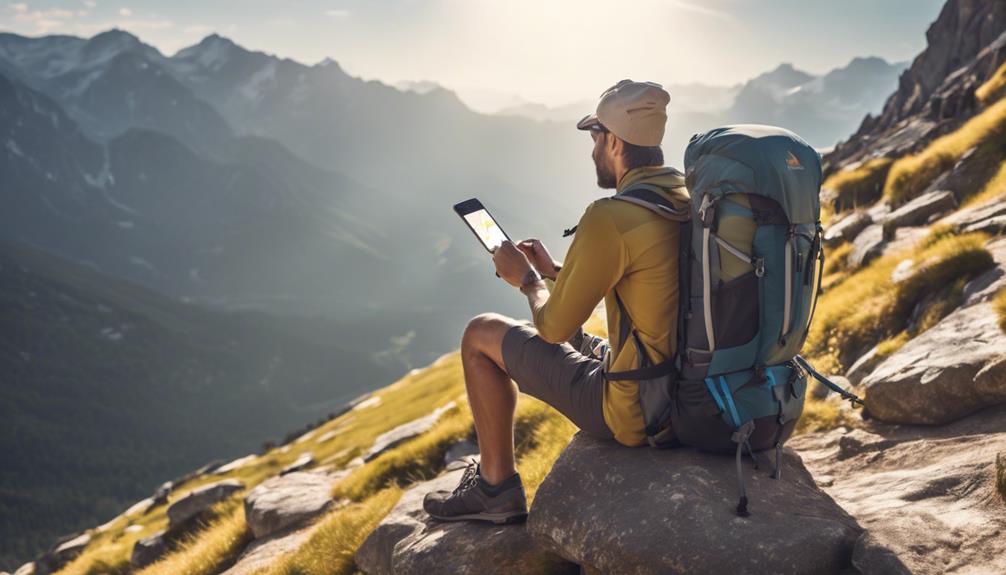When backpacking, solar panels offer reliable and renewable power for charging devices. They are lightweight and easy to carry, providing substantial energy savings and environmental benefits. Portable solar panels vary in size, from small for solo hikers to large for basecamps. Choose based on wattage output and efficiency ratings, considering weight for portability. Ensure device compatibility and practice safety measures when charging. Position panels correctly for peak efficiency and use accessories for charging. Understanding the environmental impact and maximizing solar power efficiency is key. Learn more about choosing, charging, and maximizing the benefits of solar panels for your backpacking trips.
Benefits of Solar Panels for Backpacking

When backpacking, solar panels offer the benefit of providing a reliable and renewable source of power for charging your electronic devices. One key advantage of portable solar panels is their lightweight design, making them easy to carry in your backpack without adding significant weight. This feature is pivotal for backpackers who prioritize traveling light and efficiently.
In addition to their lightweight design, solar panels also provide substantial energy savings. By harnessing the power of the sun, these panels can charge your devices without the need for traditional power sources like electricity or batteries.
This not only saves you money in the long run but also reduces your environmental impact by utilizing clean and sustainable energy.
Types of Portable Solar Panels
Portable solar panels come in various types, each with specific features and capabilities for backpacking purposes. When considering which type to choose for your outdoor adventures, it's important to take into account factors like solar panel sizes and solar panel weight.
There are three main types of portable solar panels based on sizes: small, medium, and large. Small panels are lightweight and compact, making them ideal for solo backpackers or short trips. They're typically around 5-20 watts and can easily fit on a backpack.
Medium-sized panels range from 20-100 watts and strike a balance between portability and power output. These are suitable for small groups or longer excursions. Large panels, exceeding 100 watts, are bulkier but offer high energy production, making them suitable for basecamps or larger groups.
Weight is an important consideration for backpackers. Small panels weigh between 1-3 pounds, medium panels range from 3-7 pounds, while large panels can weigh over 10 pounds. Selecting the right solar panel size and weight will depend on your power needs and the duration of your backpacking trips.
Tips for Choosing the Right Panel

Take into account the wattage output and efficiency ratings when choosing a portable solar panel for backpacking. The panel size and weight are significant factors to keep in mind. Opt for a lightweight and compact panel that can be easily carried in your backpack without adding too much bulk. Additionally, look into the durability of the panel. Since backpacking involves outdoor activities, choose a panel that's sturdy enough to withstand rough handling and varying weather conditions.
Another essential aspect to contemplate is the cost of the panel. While it's tempting to opt for the cheapest option available, investing in a slightly more expensive but higher quality panel can prove to be more cost-effective in the long run. Cheaper panels may not be as efficient or durable, potentially leading to frequent replacements or underperformance.
How to Charge Devices With Solar Panels
To effectively charge your devices with solar panels while backpacking, make sure that you position the panel in direct sunlight for best efficiency. When setting up your solar panel, consider using solar panel accessories like a USB port adapter or a power bank to store energy for later use.
Make certain that your devices are compatible with the output voltage of the solar panel to prevent damage.
Solar panel safety is vital when charging devices on the go. Avoid leaving the solar panel unattended in extreme weather conditions such as heavy rain or strong winds. Keep the panel clean and free of debris to maintain peak performance. Be cautious when handling the panel to prevent any damage to the delicate components.
Remember to check the manufacturer's guidelines for specific instructions on charging devices with your solar panel.
Maximizing Solar Power Efficiency

Position your solar panel directly facing the sun to maximize solar power efficiency while backpacking. Proper solar panel placement is crucial for best power output. Place the panel at a 90-degree angle to the sun to guarantee maximum sunlight exposure. This positioning allows the solar cells to capture the most sunlight throughout the day, enhancing energy production. Additionally, regularly adjust the angle of the panel to track the sun's movement and maintain peak efficiency.
Efficient energy storage is also essential for maximizing the benefits of your solar panel while backpacking. Invest in a high-quality power bank or portable battery to store excess energy generated during the day. This stored energy can then be used to charge your devices during periods of low sunlight or at night. Make sure your energy storage solution is lightweight and compact to complement your backpacking needs.
Environmental Impact of Solar Panels
Maximizing the environmental benefits of solar panels involves understanding their life cycle and potential impact on ecosystems. When considering the environmental impact of solar panels, it's pivotal to assess their carbon footprint.
Solar panels have a relatively low carbon footprint compared to traditional energy sources, as they don't produce greenhouse gas emissions during their operation. Additionally, solar panels contribute to the reduction of carbon dioxide in the atmosphere by generating electricity from renewable energy sources.
The production and disposal phases of solar panels are essential in evaluating their environmental impact. While solar panels are manufactured using various materials, such as silicon and metals, the extraction and processing of these materials can have environmental consequences.
Proper disposal and recycling of solar panels at the end of their lifespan are critical to minimizing their environmental impact. By harnessing renewable energy and considering the complete life cycle of solar panels, you can help mitigate their environmental footprint and promote sustainable energy practices.
Frequently Asked Questions
Can Solar Panels Charge Devices in Cloudy Weather?
In cloudy weather, solar panel efficiency decreases due to reduced sunlight. Shading can impact performance by creating hot spots and reducing overall energy production. It's important to take into account these factors for the best charging.
Are Portable Solar Panels Waterproof and Durable?
Portable solar panels are designed to be waterproof and durable. They are often made with materials like tempered glass and aluminum frames to withstand outdoor conditions. This guarantees longevity and efficiency while minimizing impact on the environment.
Do Solar Panels Work in Cold Temperatures?
In extreme cold temperatures, solar panels' efficiency may decrease due to the impact of temperature. Cold weather can affect the performance of solar panels, leading to reduced energy production compared to warmer conditions.
How Long Do Portable Solar Panels Last?
Portable solar panels can last up to 25 years. To maximize solar panel efficiency, regularly clean the surface, avoid shading, and guarantee proper storage. Routine maintenance tips include checking connections, securing mounting, and monitoring performance.
Can Solar Panels Charge Multiple Devices Simultaneously?
Yes, solar panels can charge multiple devices at the same time. However, it's crucial to consider energy efficiency to guarantee the best charging speed. Compatibility issues may arise, so check the panel's specifications to verify it can support charging multiple devices effectively.
Conclusion
Overall, investing in portable solar panels for backpacking is a smart choice for staying connected and reducing your environmental impact.
By selecting the right panel for your needs and effectively charging your devices, you can maximize efficiency and guarantee you have power when you need it most.
With a minimal environmental footprint and the ability to harness the power of the sun, portable solar panels are a valuable tool for any outdoor enthusiast.
